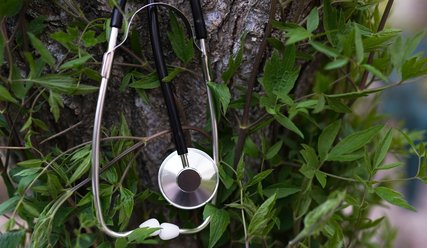Coming up for air in a "new normal"
Recently I have spoken at a couple of conferences and to local community groups, sharing reflections about how front-line health professionals have navigated the COVID-19 pandemic. I admit, I lost some sleep wondering what I could talk about that hadn’t already been discussed. For a lot of us, significant events will often create a memory marker. Where were you when you heard the news of Princess Diana’s death, when Neil Armstrong walked on the moon or when 9/11 happened?
As medical professionals, I’m guessing most of us will have a lifelong memory of where we were when we heard that New Zealand would go into Alert Level 4 lockdown on 25 March 2020. Looking back, this date marked the start of some of the most significant changes the health sector has faced and shot our careers into unexpected territories. While in the past we have been able to rely on vaccines, antibiotics and research, the arrival of COVID-19 brought uncertainty, anxiety and a worldwide race against the clock to understand the virus and how to treat it and keep people safe.
Three main factors that have contributed to today’s population having an increased life expectancy compared with several centuries ago: functioning sewerage systems and clean water, the development of antibiotics, and immunisation programmes. When thinking of the latter, even prior to COVID-19, some patients would tell me they didn’t want to immunise themselves or their whānau. I realised this was potentially because they had never seen the effects of, or experienced the likes of, polio, whooping cough or measles, or maybe they had lost their faith in medical advances. This, despite the effects of measles being seen in the deadly 2019 Samoan outbreak that took the lives of about 80 people, mostly children.
The rise and power of social media
When the COVID-19 vaccine was developed and approved for use in New Zealand, of course people were going to react to it in the same way as they did for other vaccines. There would be those who were happy to have it, those who were hesitant, and those who wouldn’t. But it wasn’t this straightforward with the COVID vaccine. We came up against a new challenge. The rise (and power) of social media, “influencers”, and misinformation. Some of my own patients sat in front of me not wanting the vaccine because they didn’t want to be microchipped or become infertile, believing the vaccine was the “devil’s work”, or that it would alter their DNA.
The reach and uptake of social media have exploded over the past decade and, while it does have its advantages and the ability to reach specific groups of people, it can also have negative consequences. I think back to a patient who was terrified of becoming infertile after listening to a podcast of a UK-based “social influencer” who had “reliable sources”. The visibility of the college and the general practice and rural hospital medicine workforce throughout the pandemic meant we bore the brunt of anger from individuals who didn’t agree with us, or with the science.
As we are living in our “new normal” with a loosening of restrictions on mask-wearing, isolation requirements and mandates, we can now look back and reflect on our journey through the pandemic and importantly, look ahead to how we might act if, or when, there is another COVID-like pandemic in the future. We must acknowledge that a one-size-fits-all approach to healthcare does not work and will not help us to overcome health inequalities that we know exist in the health system. Vaccinations (not just for COVID), not overusing antibiotics and respecting the advancements that have been made in medicine are the way forward. I’m proud of the way GPs and rural hospital doctors, as well as the rest of the health sector, have stepped up throughout the pandemic. With the majority of healthcare happening in the community, those on the front line have shown true resilience. The health system can only grow stronger for it.
Related

11 September 2025 | College and members
GPs want patients to be seen, heard and known

21 May 2025 | College and members
Budget 2025 opinion: We don't need to create a new health service, we need to invest in the current one

26 March 2025 | College and members